Todos Santos, BCS, Mexico, 5-Feb-2023 – The long and the short of it is that Celica is parked in a dirt parking lot across from a group of restaurants outside of the town proper in Todo Santos Mexico.
Jennifer and I are on a trip from Port Townsend to Todos Santos to visit our friends Dennis and Lisa, stopping along the way to see friends, both boating and non-boating.
And my mind is preoccupied with repairing the Celica. A busted car on the side of the road where I don’t have the means to repair it bothers me. It eats at me. Lately, I let other people work on our cars with mixed results. Even the best return the car with things not quite right to be discovered by us a thousand miles away. No, this breakdown is unrelated to any work we had done, but the brake pads we had installed before we left are not seating correctly. It has little impact, but it is that worm in the back of one’s head.
The drive down was a contrast of the beauty of the country we drove through, the people we met, both new to us and old friends, and the disparities of the developing world where so little works and so much is abandoned – in the rural areas. Vibrant cities, supposedly cartel-controlled cities, like La Paz blot that all out. Anglo communities like Todos Santos, where real estate prices exceed Seattle, blot that all out. But it is there. We’re in a developing nation here in Mexico.
We stopped for coffee in Portland to see Mark Niemann Ross, commonly referred to as MNR, an author and friend from the early days of the company known as Quark, makers of QuarkXPress.
A few of the people we’ll see along the way are people I have known for decades, and while I’ve known Mark since 1989, I don’t think I’ve seen him since 2002. Mark is the author of a book Jennifer and I like very much called ‘‘Stupid Machine.’’ There should be a sequel. Read the book, then pester Mark into writing it.
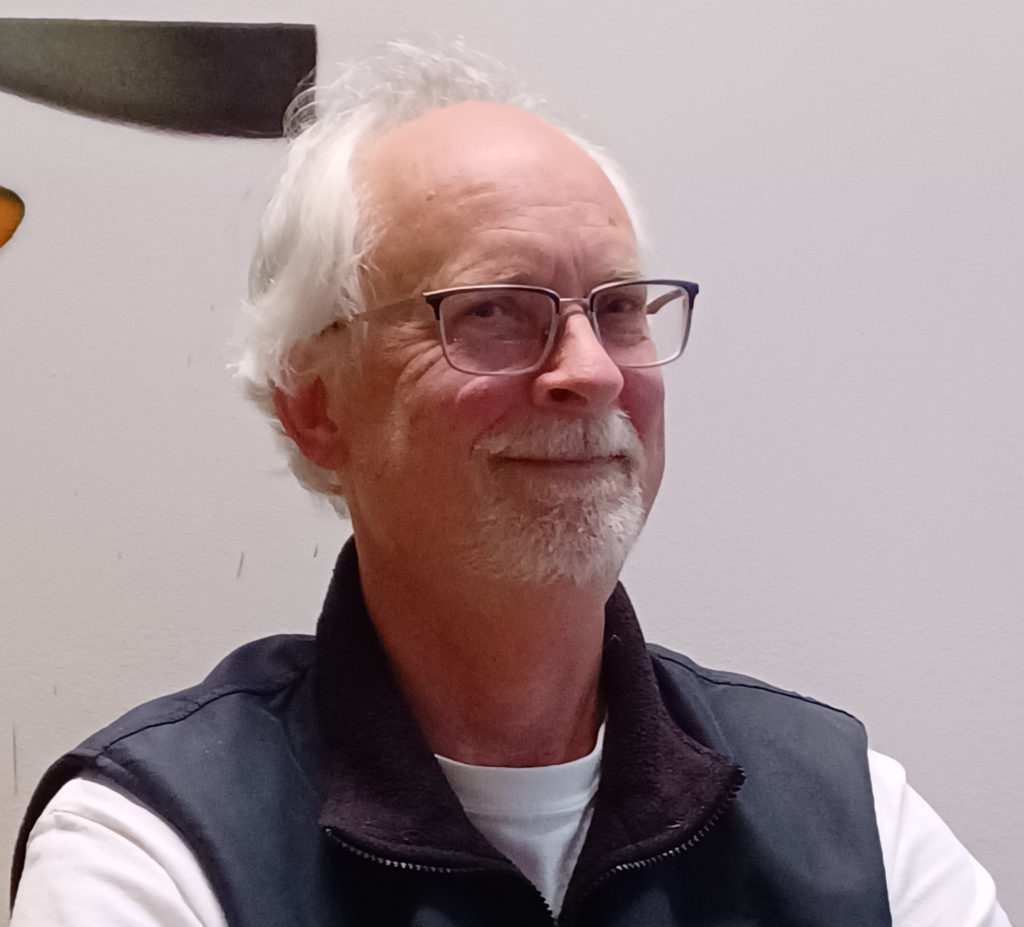
The coffee lasted a few hours, the shop closed, and Mark handed his porcelain cup (we were drinking from paper) through the gate to the staff who were cleaning up, hoping to go home.
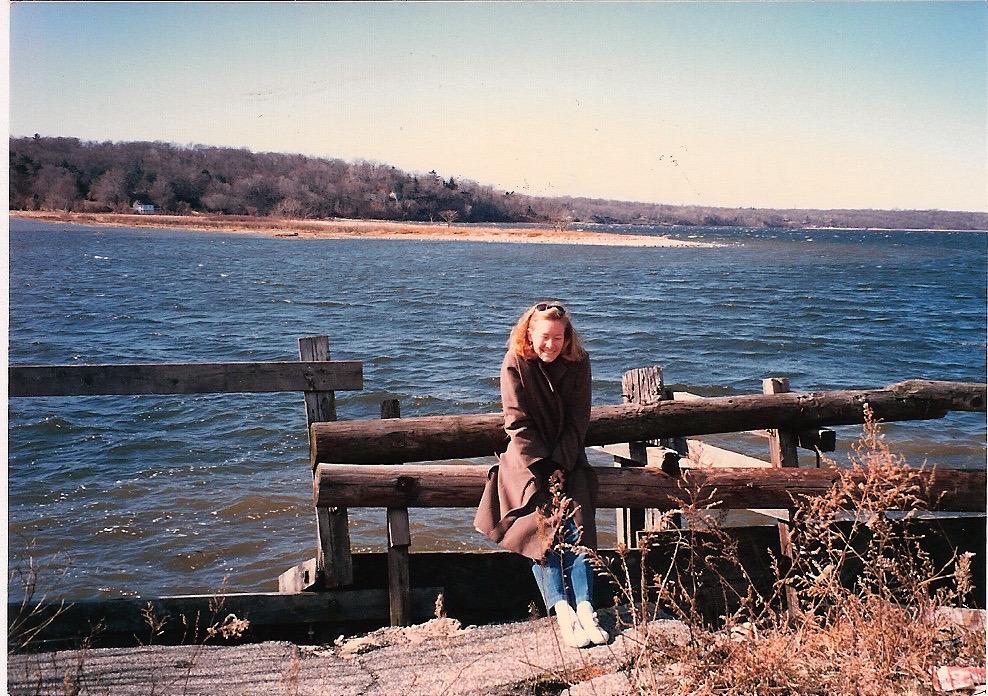
In San Francisco, we saw my friend Carol Christopher, who I’ve known since 1988, in her new apartment as she starts the next chapter in her life, and then visited the neighborhood that Jennifer lived in when she was four years old.
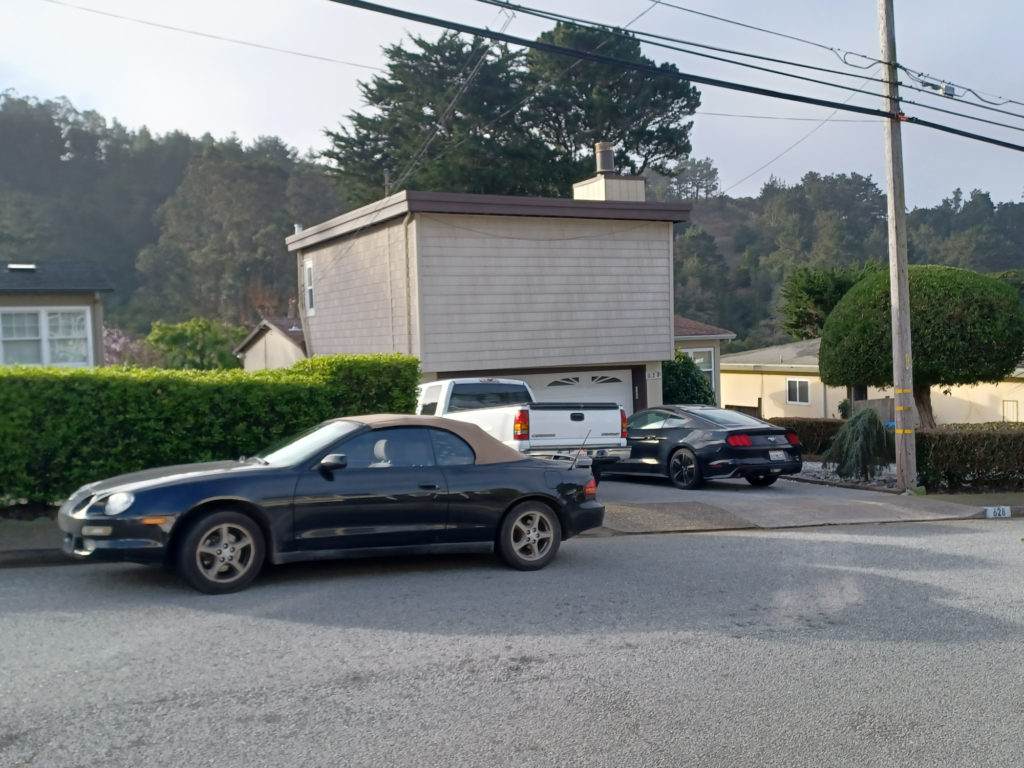
With help from a neighborhood resident, we were able to locate Jennifer’s house, which looks nothing like it did when Jennifer lived there. The neighbor was able to tell Jennifer that there had once been a koi pond where Jennifer remembered it and that he had diverted the stream that fed the pond.
How much do we really remember from when we were four years old? Jennifer remembered the Koi pond, and she somehow remembered a stub of a street down the block and a Quonset hut that was her nursery school. The stub of the street is still there, now with a compound that contains someone’s house at the dead end. The nursery school is still there, still in a Quonset hut. The playground in which she had played had just been torn down a few days before we arrived to be replaced with a newer, safer playground for this generation’s children.
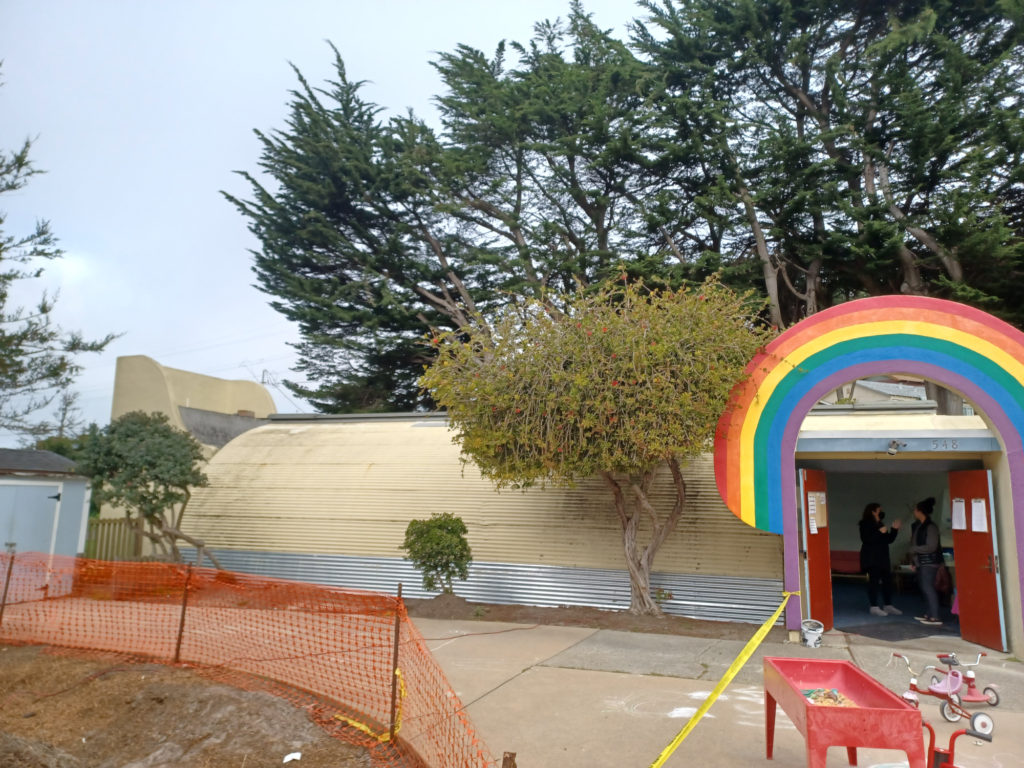
We met the current owner of the nursery school who allowed us into the school. The space was as Jennifer remembered, ‘‘but wasn’t there a piano here just inside the entrance?’’ “Yes, there was,’’ the woman replied. It was the property of the woman who owned the nursery school when this woman bought it. That woman had taken it home with her and was having children into her home. Yes, she was still alive.
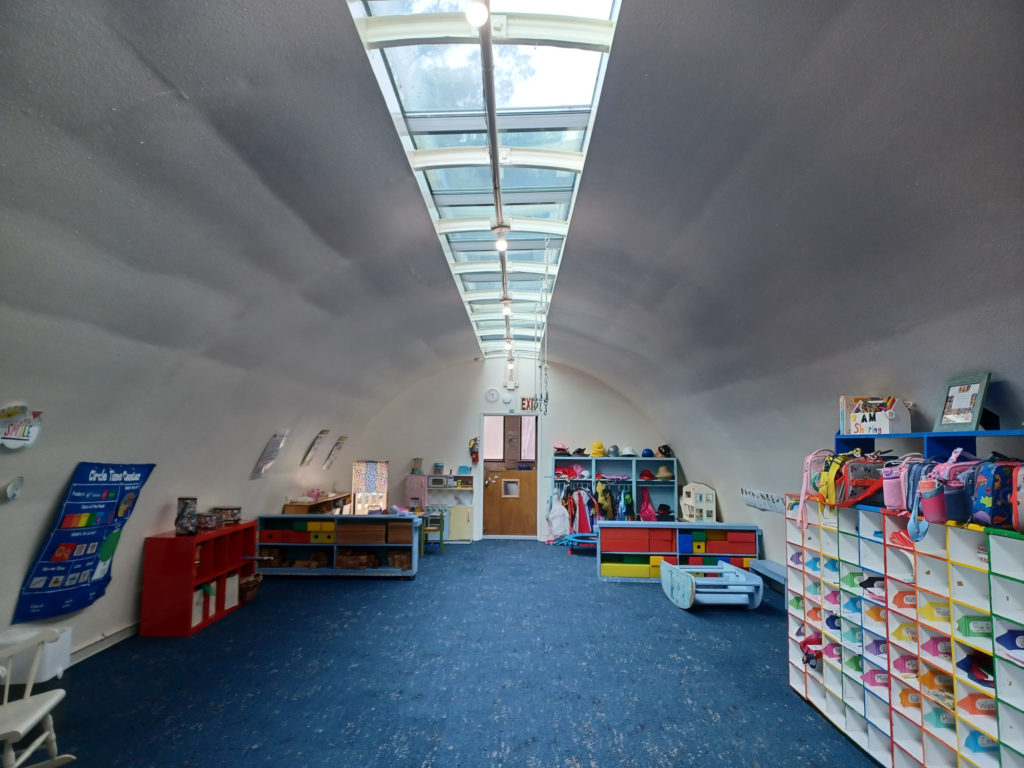
Privately, Jennifer told me that could not be the same woman. As much as adults look so very old to four-year-olds, it was very very improbable that the woman Jennifer knew 57 years ago would still be alive, and if alive running a nursery school out of her home. But, it was all there. It was all still there. However, what was, in 1965, a decidedly middle-class beach community with open lots by the water and two-lane US-1 snaking through now has US-1 in a raised corridor with on and off-ramps. The lots are all filled with houses and those closest to the water are being razed and replaced with three-story units: private residences for the wealthy.
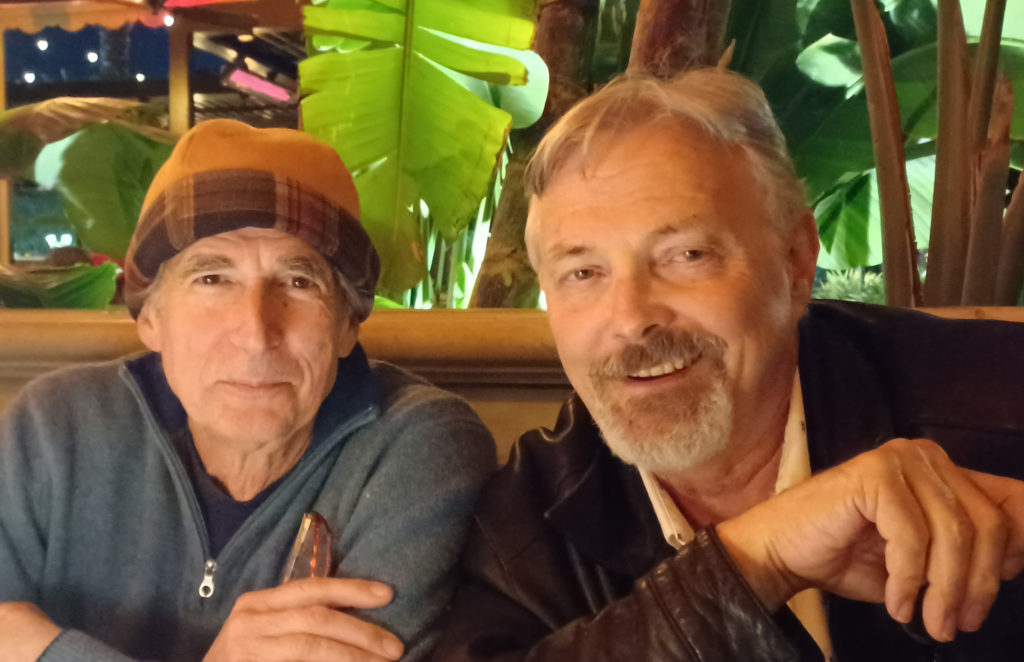
In Los Angeles, we saw Dan Oliver, who I know only from the Zingaro Saloon, an online group related to the sailboat Youtube channel Zingaro. We thought we would have a lot in common and we did. I must admit, however, it was a very LA experience. Jennifer and I found a very good rate at the Costa Mesa Westin. Westin is now owned by Marriott and the hotel and service were impeccable. However, parking was $45 for the night; tips brought it to $55. But, the help remembered us; they remembered our car, and were just nice people.
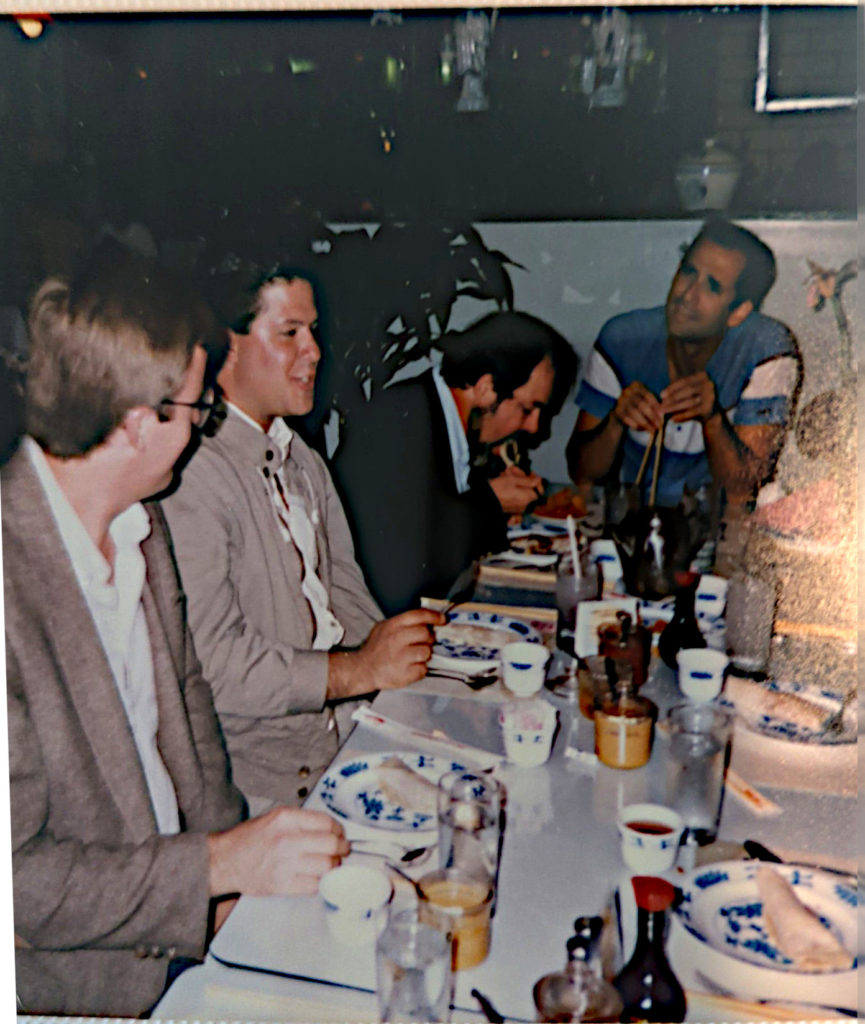
Next, we drove down to Rancho Bernardo to see Alan, who I met about the same time I met Carol, and who sent me a picture of his bachelor party with me in it. He was 28, I think. He’s 62 now, the same age as Jennifer, and planning his retirement. He talks Southern California real estate prices with us: nothing is less than seven digits in his area. Living in an affordable house that one buys when one starts a marriage, paying a very affordable mortgage, and thanks to proposition 13, property taxes which never went up, one finds oneself a millionaire at age 62. If one wants to leave Southern California, one can access those millions.
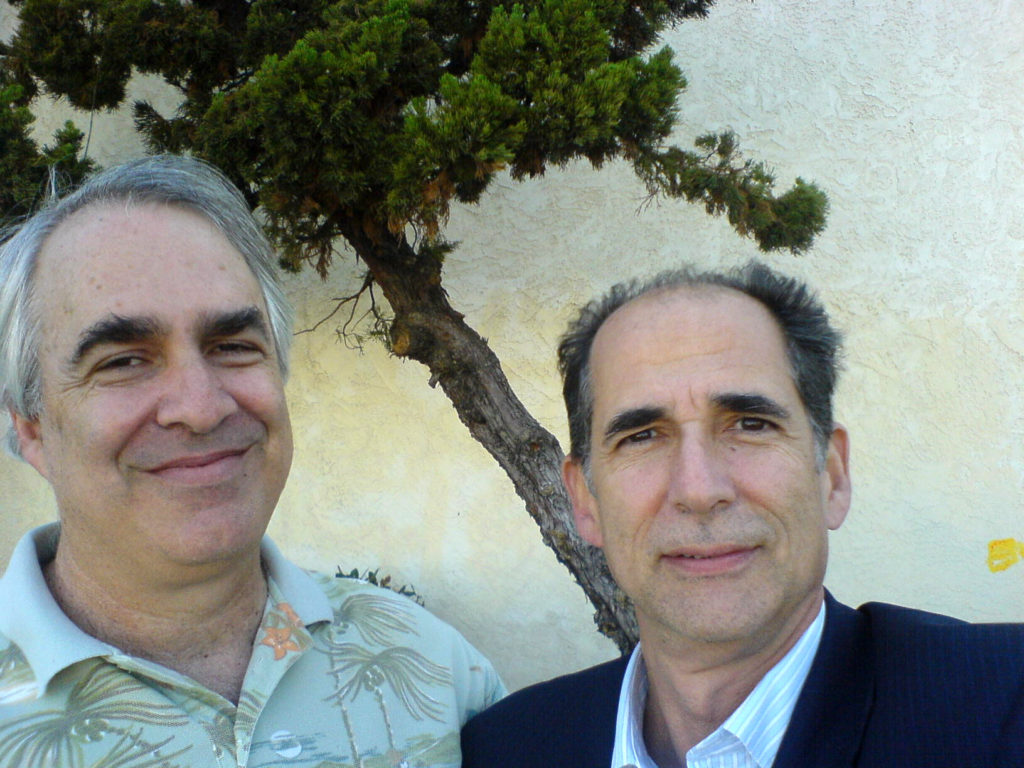

I lived in San Diego and environs for seven years in the 1980s. Now, San Diego is just the Los Angeles of years ago moved south.
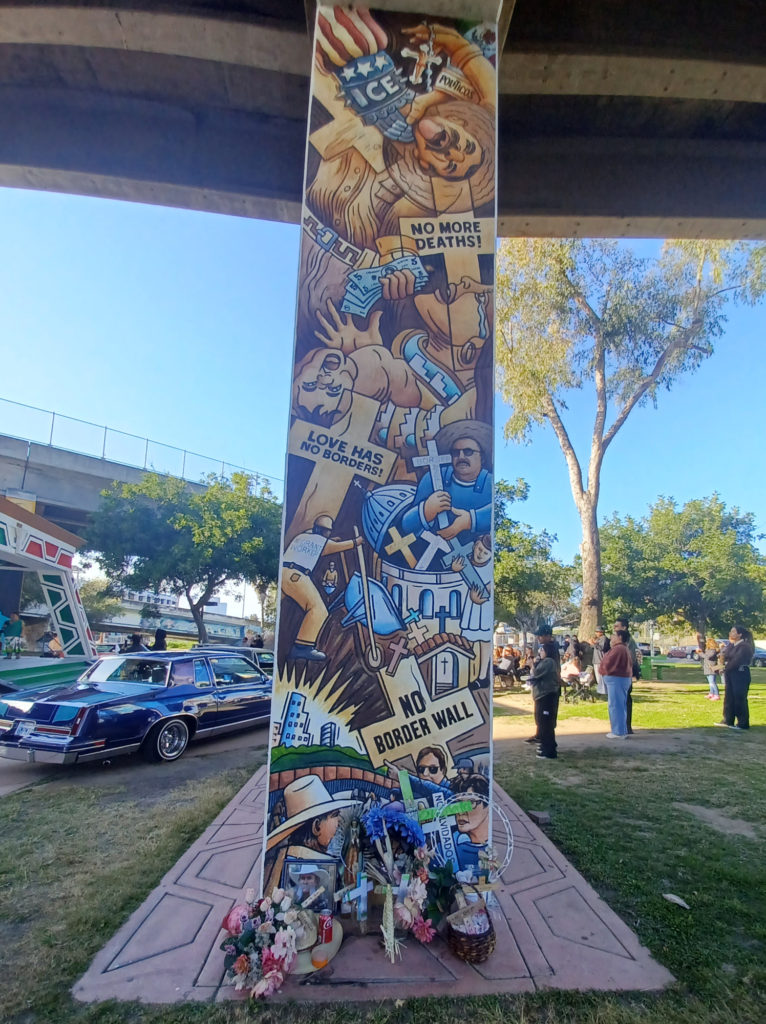
Next, next we drove into the barrio, which is becoming gentrified to some degree, but definitely safer and cleaner. Chicano Park, which was founded with a clenched fist in the 1970s, is maintained by the next generation of Chicanos now in their 40s and 50s. At Los Quatro Milpas restaurant, we met Jason also from the Zingaro saloon. While I’ve met many people from the saloon in my travels, Jason has only met me. I may be a rather poor example of the members. Like Dan and Alan, Jason is more than a few inches taller than me, and I haven’t shrunk over the years. I am feeling dwarf-like.
At Los Quatro Milpas, the woman I knew from 1986 is still there. We spoke about old times and how we are now each the oldest person in our familial pyramid. She has daughters and granddaughters working alongside her as she worked with her grandmothers and mother. It is still a cash-only business and no one but family members touch the cash.
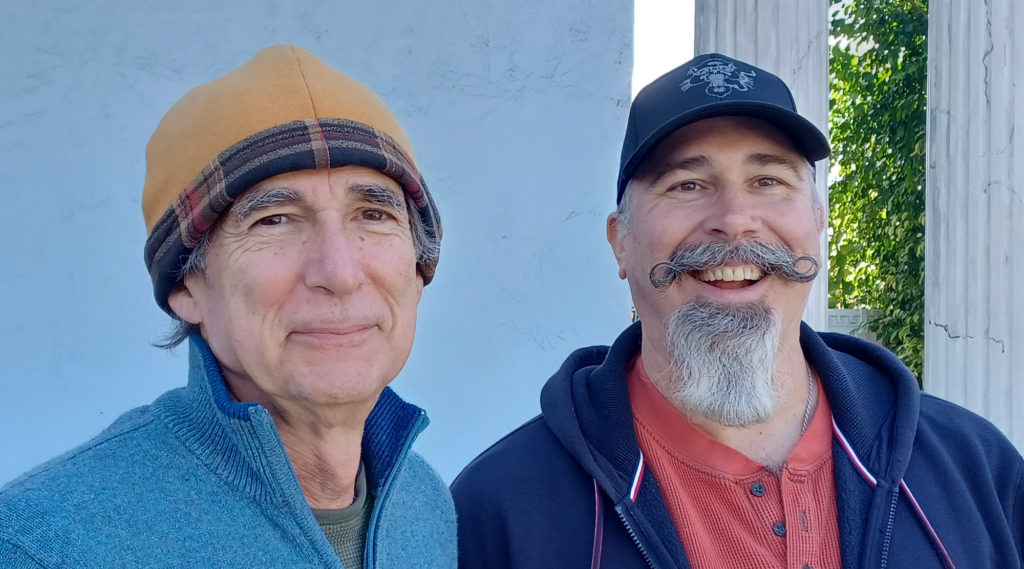
The food is unchanged; it is a return to a restaurant where only the human beings, myself included, have aged. The clientele is the same as when I went there: the same mix of all ages and ethnicities. It is a wonder that it has stayed as it is for these many decades. Founded in 1933, for all I know it is unchanged in 90 years.
Jason, Jennifer, and I took the food over to Chicano Park, sat at the picnic table and started to eat. A uniformed man walked by wearing a brown beret looking very much like Curtis Sliwas’s New York City Guardian Angels. We asked him about his uniform, and he told us that he belonged to the organization that maintains the park, lobbied for the park, and I expect had some militancy 50 years ago. He told us he was here with his fiancée, and that they were going to be married in a few minutes.
Some women dressed in native costumes were unpacking drums from a van and carrying them over to the stage in the center of the park for the ceremony. The women ranged from teenagers to theor middle 40s, with one woman very much older.
One teenage girl acted very much like a teenage girl when a man my age looks at her. She turned away so I couldn’t see her face, uncomfortable, embarrassed, blushing. But on stage in a costume that looked very much, at first glance, like the other women’s, she danced with confidence disappearing into the performance. Her costume wasn’t quite like everyone else’s costume: the colors of the feathers were not natural, they were bright blues and oranges and yellows. She wore an in-your-face T-shirt featuring a death head – so much of an assertion of who she was, or at least how she wanted to be perceived.
In an arc in front of the stage were beautiful cars from the 50s and 60s done in low-rider fashion. At the curb behind us was a ’59 Impala with a continental kit,* Dagmar bumpers, and beautifully over-the-top wheel skirts: an expression of style and taste.

The ceremony was deeply personal. Serendipity is entering my life at the most unexpected times, and I felt fortunate and honored to witness this. Though held in a completely public place, the audience was quite homogenous, with the three of us completely welcomed and very visible.
Crossing the border at Tecate, a sleepy, sleepy crossing that felt like something from the 1940s: young soldiers with little English, and an older functionary in a lovely, freshly-ironed uniform at 8 in the morning have no interest in checking the pictures in our passports against our faces. A young soldier instructed us to park the car in Mexico and then walk back to the border crossing to finish the paperwork. He moved some construction parking cones for us.
Wine country next: Vineyards as far as we could see, but we’ve been buying Mexican grapes for decades. Why should these vineyards seem so unexpected? The wine tour buildings could be plucked from anywhere, new and expensive buildings, bottles of wine running from $15-$60 US. We bought a case plus one bottle.
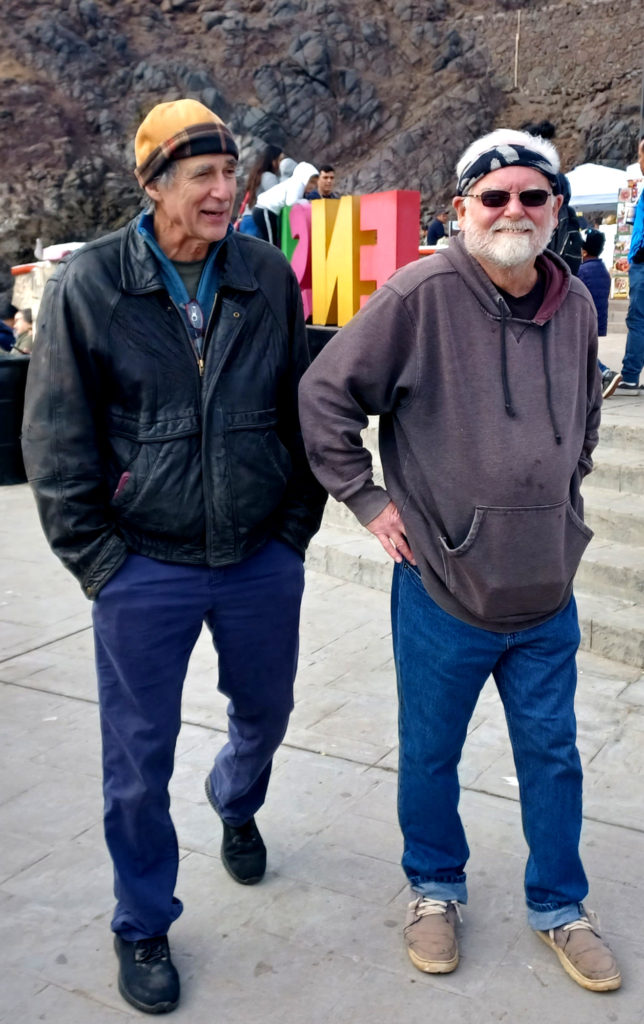
South of Ensenada, we stayed with my friend John who I have known since I’m 16 years old. John lives in what was a shack one block from the beach and pays $385 a month. He has, over time, built the shack out into a lovely home. We didn’t talk much about old times. We instead talked about the present and future.
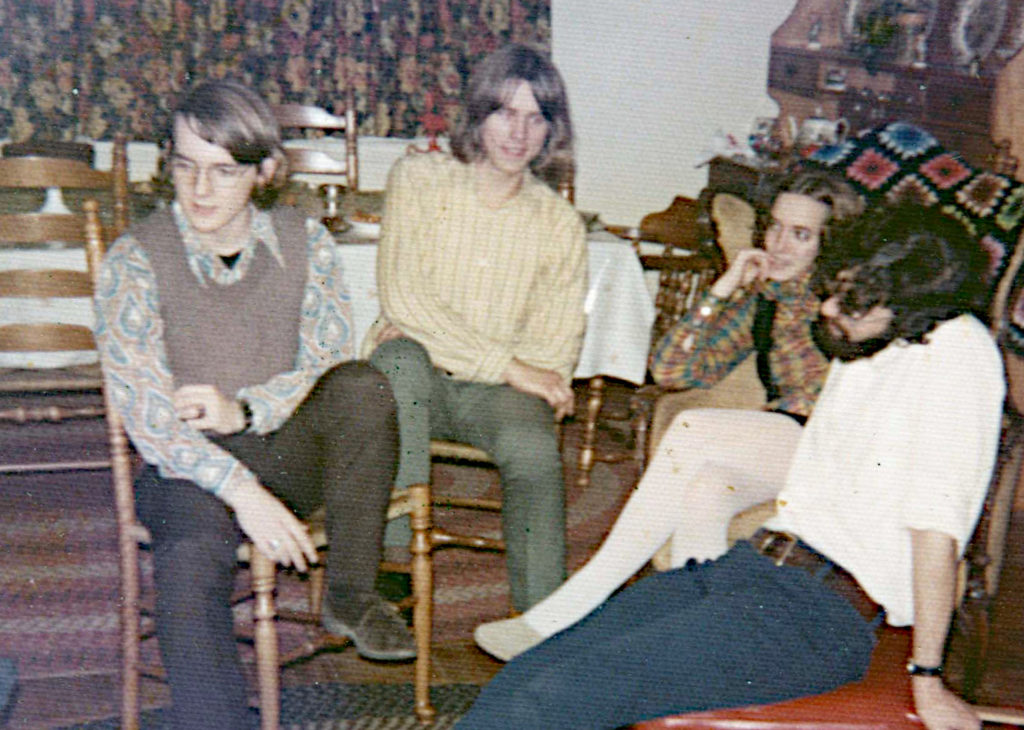
The day after we arrived, we drove in John’s car up into Ensenada where we met our friends Bill and Mary Beth of SV Pelican, who we know from our times in Ko’Olina Marina in Hawaii. They have been stuck in a boatyard for eight weeks and were quite down in the dumps. We spoke with them for a while and for reasons that I will never be able to explain, my manners failed me: I did not invite them to walk with us that afternoon. I feel shamefaced.
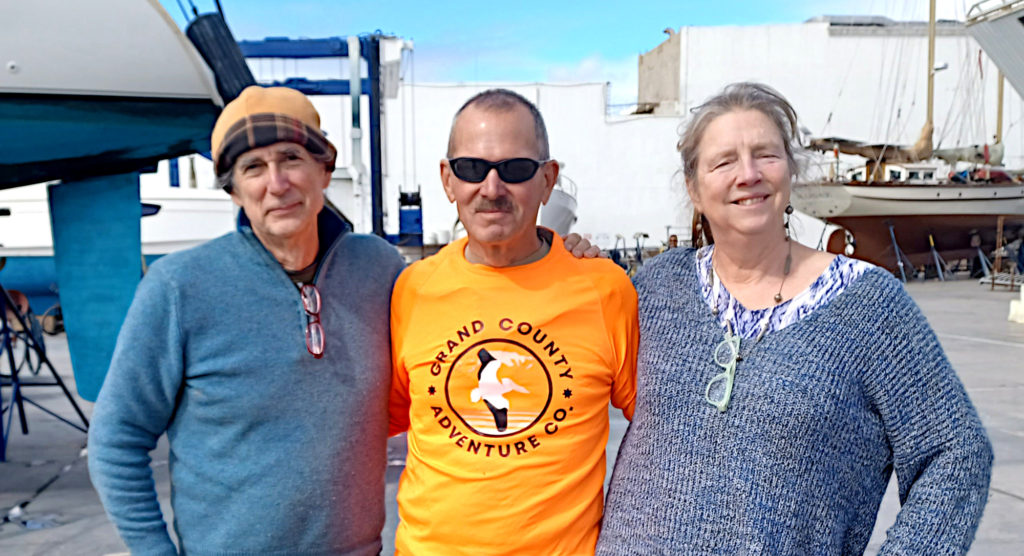
The part of Mexico we drove in has the most polite drivers. Although I’m told it’s not like this in all of Mexico, where we drove, passing was a gift given by the vehicle being overtaken. They would pull to the right to allow us to pass, or turn on their left directional as an indication that all was clear ahead. There seemed to be no speed limit enforcement and we and other drivers cruised at 120 km/h. Speed limits would rise and fall for no apparent reason, and do-not-pass signs were oftentimes placed exactly where dotted lines started in the center of the highway. But, it was beautiful country. At times, it was dark and dry. At others, covered in desert green vegetation. Jennifer kept her Roadside Geology book open on her lap while I drove.
Military checkpoints were common, though I’m not sure any one of the soldiers spoke any English at all. They would ask in English where we were from, and where we going to. But it was clear they didn’t understand any of the words we said. They were polite, friendly and waved us through.
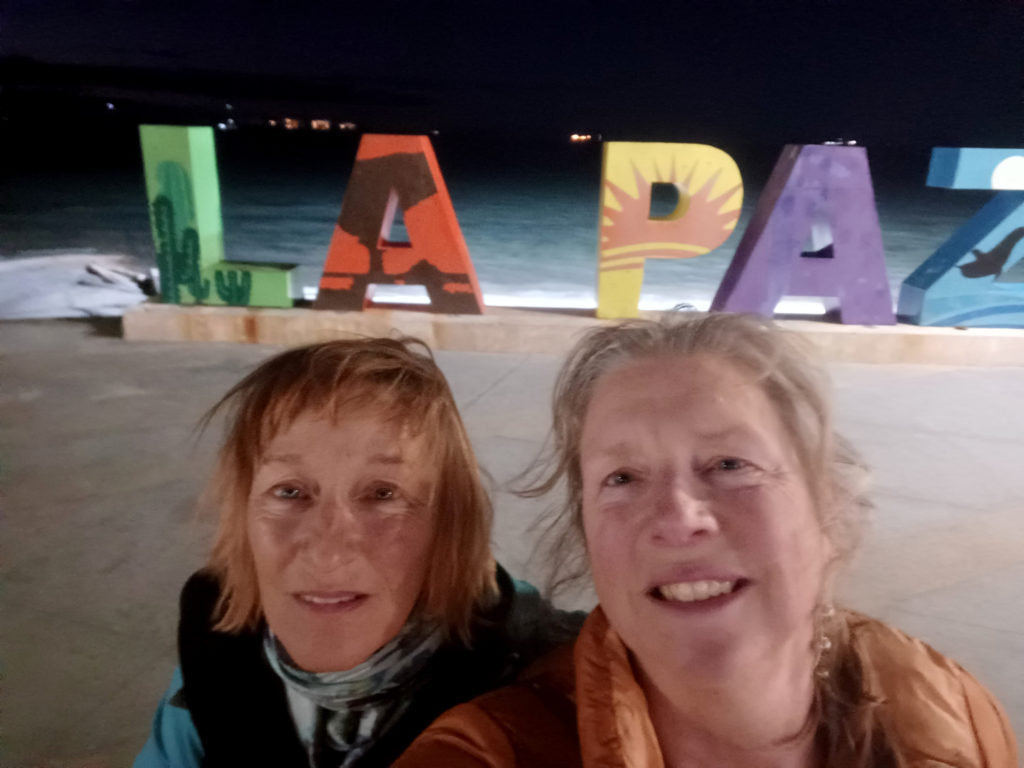
In La Paz, which is a fully-fledged city, we met our friends Anya and Thomas, who were welcoming friends and a welcome sight, and about who I’ve written many times. We met them originally as both boats were headed to Somalga Pass in the Aleutians: Anya and Thomas coming from Japan, and Jennifer and me coming from Hawaii. We ate out at fun, competent restaurants, walked along the malecón and enjoyed the hell out of the city. I learned that my friend Drew, with whom I sailed from Port Angeles to Oakland, and who Anya and Thomas met in Port Angeles, was on the hard here for six months and became friends with Anya and Thomas.
We took the long way from La Paz passing through Cabo San Lucas and entering Todos Santos from the South.
Todos Santos is becoming a destination city with an artist community and fine music, very fun restaurants, and housing prices that are higher than Seattle. Houses in the Anglo section of town are between 700,000 and $2 million. With this kind of money comes prosperity for everyone. We arrived in time for a two-day open studio art show in which our friend Dennis was displaying his paintings. Most everyone who comes to visit is American and are buying the art to decorate their Todos Santos homes.
A startling number of the people here are from within 15 miles of Port Townsend where Jennifer has her house. This shouldn’t be surprising. People learn from their neighbors and the opportunity to buy here is learnt that way.
We drove from studio to studio in Jennifer’s Celica with the top down enjoying the sunshine, creeping around potholes and over speed bumps. Passing five tacos and a beer, an open garden restaurant, where Jennifer and I had eaten the day before, the Celica stalled. With the Celica’s momentum, we coasted into a parking spot, and so she sits for the past two days.
It is the weekend and no mechanics that we have called will respond.
Without tools I can’t work on the car, without an ODB2 scanner I can’t ask the car what it thinks it’s wrong.
At the moment, I believe it is one of four things:
• a sensor or the connector to a sensor has failed;
• an electronic component, the master computer, or some other smart logic board has failed, I do not seem to be getting any spark at the spark plug, which makes any of the two preceding items possible, but
• it may also be the coil; and last, and this is the one I’m starting to lean towards,
• the timing belt has broken. This engine does not have interfering valves, meaning that if the valves and pistons get out of sync, the pistons cannot hit the valves causing untold and heartbreaking damage. High-performance engines, of which I have owned a few, are built with interfering valves and it is a very unpleasant state once this happens.
The timing belt is a routine maintenance item; if it is that it is a half-day job. Or it was on other cars I have owned.
Any chance I’m correct? Standby… We’ll find out together.
* A continental kit is a rear bumper-mount vertical spare tire. It lived on for years in the circular disc that was incorporated into the Lincoln Continental trunk lid.







Keeping my fingers crossed that you got the Celica running with no further headache!
Many thanks for bringing us along on this roadtrip – I’ve been fascinated with Baja ever since reading The Sea of Cortez (isn’t that what happens to everyone who reads it?) but have never been. Someday!
In the meantime – thank you again.
We’ll see about the Celica.
The garage picked it up yesterday. I will reëxamine traveling without tools.
There is an unbelievable amount of money coming into this area. I’m guessing I have seen about $200MM worth of construction personally but iy does bring prosperity to the people that live here.
Your trip looked very good. (https://davidpablocohn.com/)